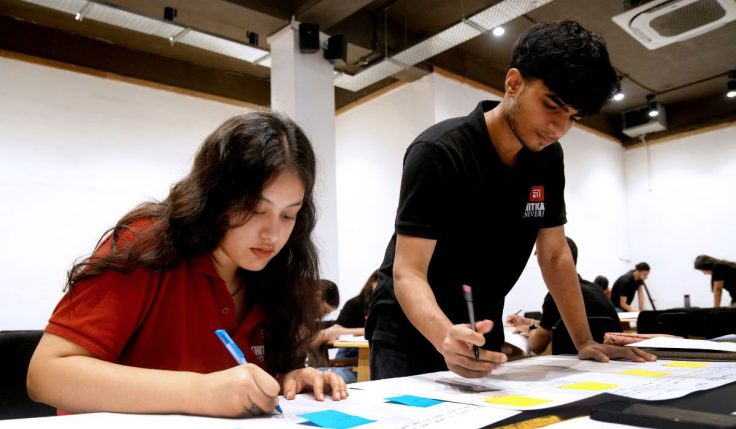Interior design is a dynamic field that constantly evolves to reflect changes in culture, technology, and aesthetics. The luxury segment of interior design is particularly intriguing, as it showcases the most opulent and refined aspects of living spaces. For students aspiring to pursue a career in interior design, understanding the evolution of luxury interior design from classic to contemporary styles is essential. This journey through time offers insights into design principles, historical context, and the fusion of tradition and innovation.
Classic Luxury Interior Design: Timeless Elegance
Classic luxury interior design draws inspiration from historical periods such as the Renaissance, Baroque, and Victorian eras. It places a strong emphasis on ornate details, intricate craftsmanship, and the use of rich materials. Here are some key features of classic luxury interior design:
Architecture as Art: Classic luxury interiors often mimic architectural elements in their designs, incorporating features like grand arches, decorative moldings, and elaborate columns.
Opulent Materials: Materials such as marble, mahogany, silk, and velvet are commonly used to create a sense of opulence and richness.
Intricate Detailing: Elaborate patterns, intricate carvings, and decorative motifs are prevalent in classic luxury design. Furniture, textiles, and accessories showcase meticulous craftsmanship.
Rich Color Palette: Deep, jewel-toned colors like burgundy, royal blue, and gold are characteristic of this style. They add a sense of warmth and luxury to the space.
Formal Layout: Classic luxury interiors often follow a formal layout, with symmetrical arrangements and a focus on creating harmonious, balanced spaces.
Read this blog post: Mastering Style and Innovation: Interior Design Trends for 2023
Transitional Luxury Interior Design: Bridging the Gap
Transitional luxury interior design emerged as a response to the changing preferences of homeowners who sought a blend of classic elegance and modern simplicity. It aims to strike a balance between traditional and contemporary styles. Key characteristics include:
Subdued Elegance: While still incorporating some traditional elements, transitional luxury design embraces cleaner lines and a more understated approach to detailing.
Neutral Color Palettes: Beige, gray, and cream tones take center stage, creating a neutral backdrop that allows statement pieces to shine.
Mix of Materials: Transitional interiors often blend different materials, like pairing a sleek glass coffee table with a plush, tufted sofa, to create a harmonious contrast.
Focus on Comfort: Furniture prioritizes comfort without sacrificing style. Sink-in sofas and cozy seating arrangements create inviting spaces.
Less Formal Arrangements: Spaces are arranged for comfort and functionality rather than strict formality, encouraging a more relaxed atmosphere.
Contemporary Luxury Interior Design: The Essence of Modern Opulence
Contemporary luxury interior design represents the pinnacle of sophistication in the present day. It showcases the latest design trends, cutting-edge technology, and a commitment to minimalism without compromising on comfort. Noteworthy features include:
Sleek and Streamlined: Clean lines, uncluttered spaces, and minimal ornamentation define the contemporary luxury style. Furniture features smooth surfaces and geometric shapes.
Open Concept: Contemporary luxury often embraces open floor plans that create a seamless flow between different areas of the home, emphasizing a sense of spaciousness.
High-Tech Integration: Smart home technology is seamlessly integrated into the design, allowing homeowners to control lighting, temperature, and entertainment systems with ease.
Monochromatic Palette: Neutral colors with occasional pops of bold tones create a sophisticated, cohesive look. A focus on textures and materials adds visual interest.
Statement Art and Sculptures: Contemporary luxury spaces often feature striking artwork, sculptures, and unique installations that serve as focal points.
The Journey of Evolution: Where Tradition Meets Innovation : Understanding the evolution of luxury interior design offers students insights into the historical context, design philosophies, and aesthetic principles that have shaped this field. Aspiring interior designers can draw inspiration from each era, blending classic elegance with modern sensibilities to create spaces that resonate with clients’ desires and personalities.
For students seeking a career in interior design, it’s crucial to appreciate that the essence of luxury lies not only in opulent materials but also in the thoughtful curation of space, the harmonious fusion of old and new, and the ability to create environments that evoke emotions and enhance lifestyles. As the world continues to evolve, so too will luxury interior design, offering exciting opportunities for creative expression and innovation in the realm of living spaces.
Chitkara University’s Journey through Design: From B.Des to M.Des in Interior Design
Are you captivated by the art of transforming spaces into captivating experiences? Do you dream of shaping the future of interior design through a perfect blend of creativity and technical excellence? Chitkara University offers a seamless path to your aspirations, starting with a 4-Year Bachelor of Design (B.Des) in Interior Design and culminating in a 2-Year Master of Design (M.Des) in Interior Design. This comprehensive journey equips you with the skills, knowledge, and creativity needed to become a trailblazing interior designer.
Also, read this blog post: Neutral Interiors: The Evergreen Interior Design Trends
Your journey begins with the 4-Year B.Desin Interior Design program at Chitkara University. This program offers an immersive experience that not only covers the evolution of interior design but also nurtures your creativity and design acumen. From history and theory to materials and technology, you’ll delve into the intricacies of interior design. Features like ornate detailing of classic luxury, the balance of transitional design, and the sleek elegance of contemporary luxury are all part of your education.
Crafting the Future of Interior Design: Chitkara University’s integrated B.Des and M.Des programs provide a comprehensive journey through the world of interior design. As you traverse the evolution from classic to contemporary luxury, from foundational principles to advanced techniques, you’ll emerge as a designer equipped with the knowledge, skills, and network needed to excel in the dynamic world of interior design.






